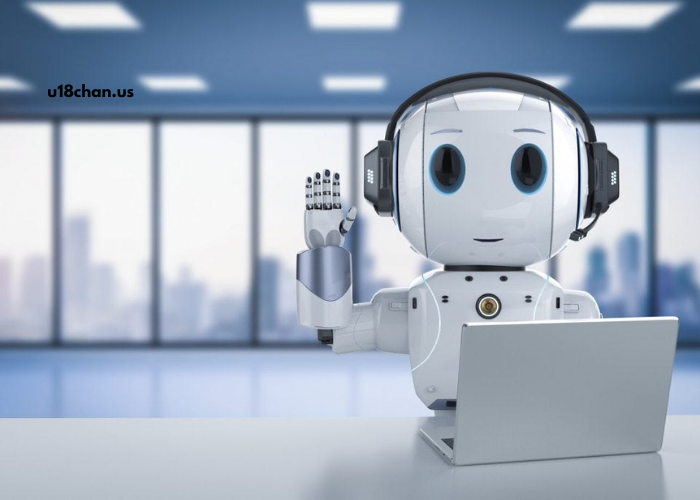Artificial Intelligence (AI) has emerged as one of the most transformative technologies of the 21st century. Its impact on various industries is profound and continues to evolve rapidly, with new advancements being made almost daily. From healthcare to entertainment, AI is shaping the future, unlocking new possibilities, and solving complex problems in ways that were once considered impossible.
In this article, we will explore how AI is changing the world, focusing on its influence across multiple sectors, and examine its potential to revolutionize our lives further.
Table of Contents
- Introduction: The Rise of AI
- The Core Technologies Behind AI
- 2.1 Machine Learning
- 2.2 Natural Language Processing
- 2.3 Computer Vision
- 2.4 Robotics
- AI in Different Industries
- 3.1 AI in Healthcare
- 3.2 AI in Finance
- 3.3 AI in Manufacturing
- 3.4 AI in Transportation
- 3.5 AI in Entertainment
- Challenges and Concerns in AI Adoption
- 4.1 Ethical Implications
- 4.2 Job Displacement
- 4.3 Security Risks
- The Future of AI in Technology
- Conclusion
1. Introduction: The Rise of AI
Artificial Intelligence refers to the simulation of human intelligence in machines, enabling them to perform tasks that typically require human intellect. The concept of AI is not new, but its application has seen significant advancements in recent years due to breakthroughs in data processing, computing power, and machine learning algorithms.
The exponential growth of AI is reshaping many aspects of our lives, from how we interact with technology to the ways businesses operate. As AI continues to evolve, it holds the potential to fundamentally change industries, improve efficiencies, and even influence societal norms and values.
2. The Core Technologies Behind AI
Before diving into how AI is revolutionizing industries, it’s essential to understand the core technologies that power artificial intelligence. These technologies enable machines to “learn,” “understand,” and “decide” without human intervention.
2.1 Machine Learning
Machine Learning (ML) is a subset of AI that allows machines to learn from data and improve over time without being explicitly programmed. In ML, algorithms identify patterns and make decisions based on the data they are trained on. This technology is widely used in applications such as recommendation systems, fraud detection, and predictive analytics.
2.2 Natural Language Processing
Natural Language Processing (NLP) allows machines to understand, interpret, and generate human language. NLP powers virtual assistants like Siri, Alexa, and Google Assistant. It also facilitates sentiment analysis, language translation, and chatbots, helping businesses enhance customer interactions and streamline communication.
2.3 Computer Vision
Computer Vision is a field of AI that enables machines to interpret and understand visual information. Using deep learning algorithms, computers can “see” and analyze images and videos, making applications like facial recognition, autonomous vehicles, and image-based search possible.
2.4 Robotics
Robotics combines AI with physical devices to create machines capable of performing tasks autonomously or semi-autonomously. From industrial robots that build cars to robotic surgery systems, AI-powered robots are increasingly taking over manual and repetitive tasks, improving efficiency, precision, and safety.
3. AI in Different Industries
AI’s impact extends across numerous industries, transforming business models, optimizing operations, and enhancing customer experiences. Let’s explore how AI is making a difference in several key sectors.
3.1 AI in Healthcare
Healthcare is one of the most promising areas where AI is making a significant impact. AI algorithms can analyze medical data much faster than humans, enabling quicker diagnoses and treatment recommendations. For example, AI-powered tools can detect early signs of diseases like cancer through medical imaging analysis, sometimes identifying conditions that may be missed by human doctors.
AI is also revolutionizing drug discovery by predicting how different compounds might interact with diseases at a molecular level, reducing the time and cost of developing new drugs. Additionally, AI-based systems can manage patient records, automate administrative tasks, and provide personalized treatment plans.
3.2 AI in Finance
In the finance industry, AI is improving efficiency and transforming customer service. Machine learning algorithms help banks and financial institutions detect fraudulent activities by analyzing transaction patterns in real-time. AI also plays a significant role in risk management and portfolio optimization, allowing investors to make data-driven decisions.
AI-powered chatbots and virtual assistants are streamlining customer support services, offering round-the-clock help for a wide range of financial queries. In trading, AI algorithms can analyze massive datasets to predict market trends, enabling investors to make more informed decisions.
3.3 AI in Manufacturing
Manufacturers are increasingly adopting AI to optimize their production lines, reduce waste, and improve product quality. AI-driven systems can monitor production processes in real-time, detecting inefficiencies and predicting when machinery needs maintenance to avoid downtime.
Robots in manufacturing are not only performing repetitive tasks but also adapting to new situations through reinforcement learning. Smart factories equipped with AI-driven systems are becoming more common, resulting in higher levels of automation, precision, and flexibility in production.
3.4 AI in Transportation
AI is fundamentally changing the transportation industry by enabling the development of autonomous vehicles. Self-driving cars, trucks, and drones are already being tested and used in limited capacities. These vehicles rely on AI technologies like computer vision, sensor fusion, and machine learning to navigate, make decisions, and adapt to their environments.
AI is also improving logistics and route optimization. Companies are using AI to predict traffic patterns, manage fleets more efficiently, and reduce fuel consumption, leading to more sustainable and cost-effective transportation systems.
3.5 AI in Entertainment
The entertainment industry has embraced AI for both content creation and distribution. AI algorithms are used to recommend movies, music, and shows based on users’ preferences, creating highly personalized experiences. Streaming services like Netflix and Spotify use AI-driven recommendation systems to keep users engaged.
AI is also being used in the creation of visual effects, animation, and even in writing scripts or composing music. Machine learning algorithms can analyze vast amounts of data to generate creative content, significantly speeding up the creative process.
4. Challenges and Concerns in AI Adoption
Despite the numerous benefits of AI, its adoption comes with several challenges and concerns that need to be addressed for its responsible deployment.
4.1 Ethical Implications
As AI systems become more integrated into daily life, ethical questions arise. Concerns about bias in AI algorithms, transparency in decision-making, and accountability for AI-driven actions are at the forefront. AI systems are only as good as the data they are trained on, and biased data can lead to biased outcomes, which can have far-reaching consequences, particularly in sensitive areas like healthcare and criminal justice.
4.2 Job Displacement
AI and automation have the potential to replace human workers in several industries, leading to concerns about job displacement. While AI will create new jobs and opportunities, it may render certain roles obsolete, particularly those involving repetitive tasks or routine manual labor.
Governments, companies, and individuals must address these concerns by focusing on reskilling and upskilling workers, ensuring that they are equipped for the new job market shaped by AI.
4.3 Security Risks
AI’s ability to analyze vast amounts of data makes it vulnerable to exploitation. Cybersecurity risks associated with AI include malicious attacks that target AI systems, leading to data breaches or system manipulations. As AI becomes more embedded in critical infrastructures like healthcare and transportation, ensuring robust security protocols is crucial.
5. The Future of AI in Technology
The future of AI holds immense potential. As technology continues to improve, we can expect AI to become more sophisticated and integrated into everyday life. Some key areas where AI is expected to make an even bigger impact include:
- AI and the Internet of Things (IoT): AI can help manage the vast amount of data generated by IoT devices, leading to smarter homes, cities, and industries.
- AI in education: AI-driven personalized learning systems can revolutionize education by providing tailored content and feedback to students, improving learning outcomes.
- AI in climate change: AI can be used to model climate change scenarios, optimize energy usage, and even develop new technologies to mitigate environmental impact.
As AI continues to advance, its ethical, societal, and economic implications will need to be carefully managed to ensure that its benefits are shared equitably.
6. Conclusion
Artificial Intelligence is undoubtedly changing the world in profound ways. From revolutionizing industries to reshaping how we live and work, AI holds the potential to unlock new opportunities and drive progress. While there are challenges to overcome, such as ethical concerns and the risk of job displacement, the future of AI is filled with promise. As we move forward, it will be essential for governments, businesses, and individuals to work together to ensure that AI is developed and deployed in ways that benefit society as a whole.
By continuing to harness the power of AI responsibly and ethically, we can usher in a new era of technological innovation that will transform our world for the better.




